There’s a lot more that goes into the planning and manufacturing a food truck than most people think. Take for example the layout and installation of the cooking equipment inside the truck. As a straight-forward example, a tater tot truck would need to make sure they had deep fryers, a fridge to keep product cool, and a prep station to add all the yummy toppings like sour cream or chives.
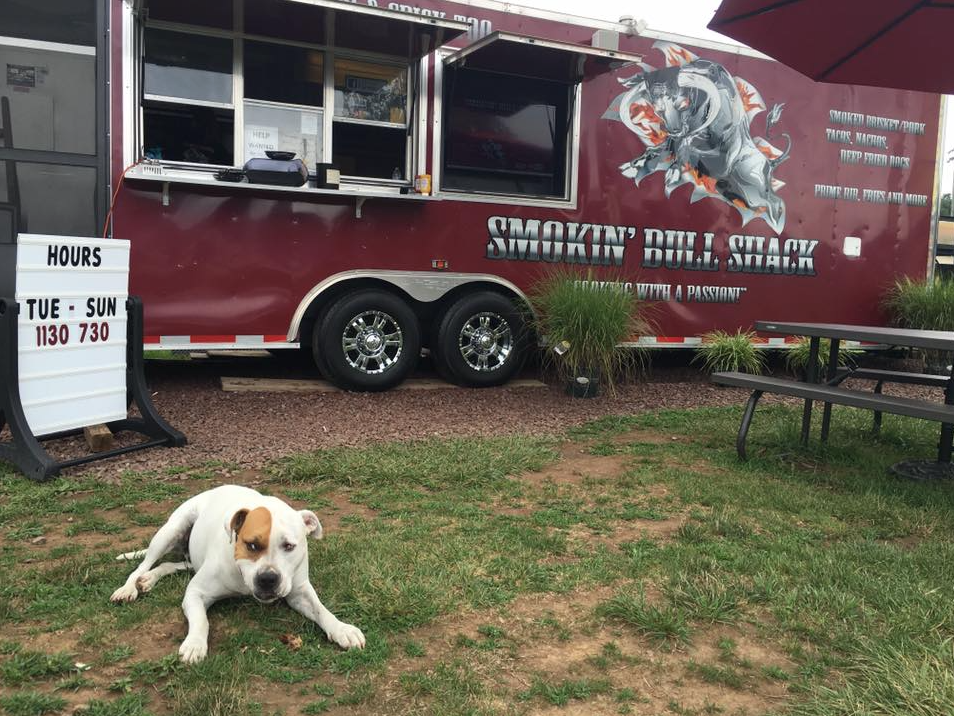
Another satisfied customer of Smokin’ Bull Shack. Built by M&R Specialty Trailers and Trucks.
But having the tater tot equipment is installed in the food truck is not enough. You also need to make sure each piece is laid out in a way that will be efficient for chefs cooking onboard. To accomplish this goal, a blueprint or written plan for each food truck design is critical. You do not want the chef (or yourself) to be forced to zig-zag across your trailer like a pinball to cook a single menu item. You might be able to serve food this way during slow time periods on the truck, but during a lunch rush with multiple workers onboard an inefficient setup can be both frustrating and hurt profits if can’t serve food fast enough.
Ideally you want to design the layout or blueprint that allows you to cook food on an assembly line from start to finish. When you think about some of the most profitable restaurants in history like McDonalds or Chipotle, they assemble their food in the this way. When you go to Chipotle, you start by selecting your wrap, then decide on beans, rice, meats, and continue on down a straight line until your perfect burrito is crafted. Can you imagine how inefficient and unorganized these restaurants would become if employees needed to walk to different parts of the kitchen to make a burrito? And yet, this is exactly how many mobile kitchens are laid out.
At M&R Specialty Trailers and Trucks, we work with our customers to design a kitchen layout that’s optimized to serve their menu items. After developing a blueprint, we walk each customer through the recommendations to ensure that the layout will meets their needs. If you’re going to make an investment in a food truck or trailer, we want to be confident it’s built to last and manufactured in a way that will help your business operate profitably.
Three Types of Food Truck Blueprints
Although kitchen layout is important for the operations of a food truck it’s not the only blueprint that is developed. We create a total of three blue-prints for each build we produce to ensure your truck is ready to roll:
Kitchen Blueprint: The kitchen blue-print is what we’ve been highlighting so far within this post. The goal of this document is to demonstrate where each piece of equipment will be installed within the trailer. This allows us to demonstrate how much space is available on the truck in addition to walking through how food will be cooked on the concession trailer.
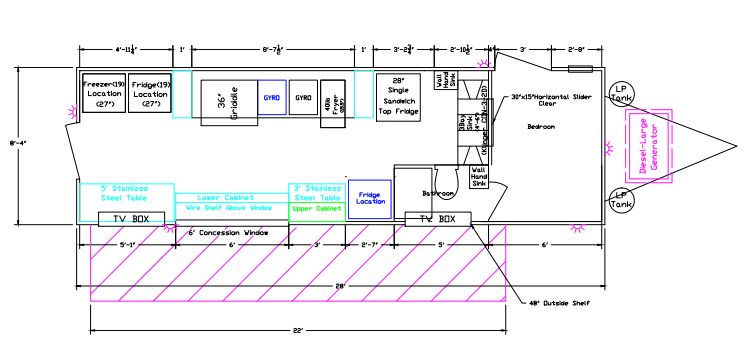
Example 1: Concession Trailer Kitchen Blueprint
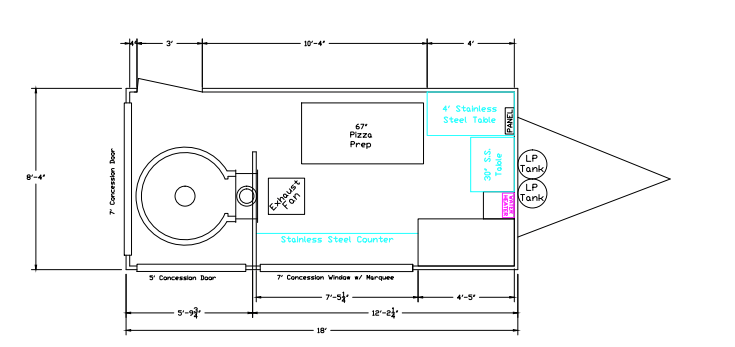
Example 2: Pizza Trailer Kitchen Blueprint
Electrical Blueprint: The electrical blueprint is another important piece of planning a food truck build. Without planning correctly for electrical needs you could find yourself out of power in the worst possible time: Usually when you’ve got a lot of customers and all the kitchen equipment is in use. Our electrical blueprints ensure that your vehicle will have power when you need it. As food trucks become more complex with exterior lighting, televisions or digital menus, you want to be confident your food truck build is sound from an electrical perspective. Often, we need to produce two separate electrical blueprints, one for the ceiling, one for the rest of the vehicle as demonstrated below.
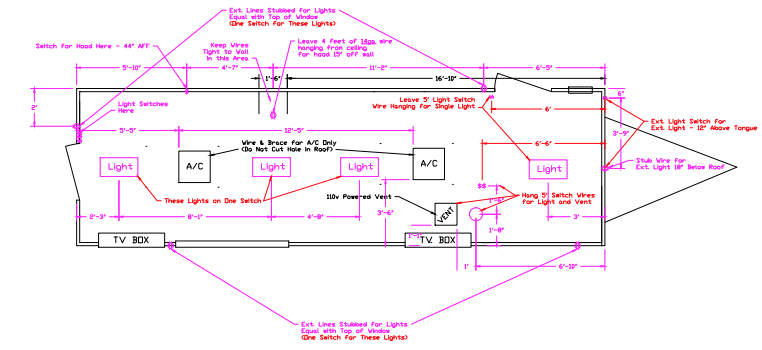
Example 1: Electrical Ceiling Blueprint
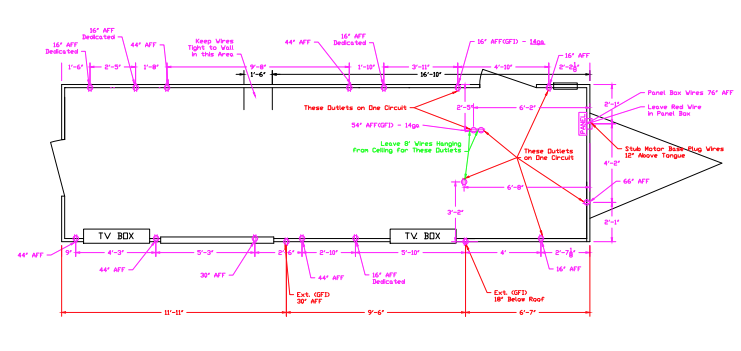
Example 2: Electrical Blueprint
Plumbing Blueprint: Finally, there’s the the plumbing blue-print. This section ensures that you’re waste water is going to a tank. But also ensures that you’ll have plenty of hot and cold water on demand from your sinks. One of the challenging aspects of building a food truck is that you’ve got to understand mechanical, electrical, plumbing, and the operational side of a food truck business. At M&R Specialty Trailers and Trucks we’ve been in business for over 15 years and understand each step of the food truck build process in depth.
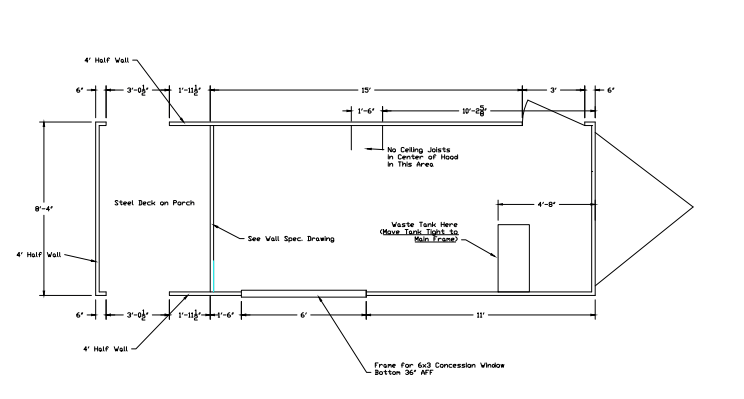
Plumbing blueprint.
As you can see there’s a lot more that goes into the planning stages of a food truck build than meets the eye. We hope this gives you a better understanding of everything it takes to manufacture a quality concession truck or trailer.
